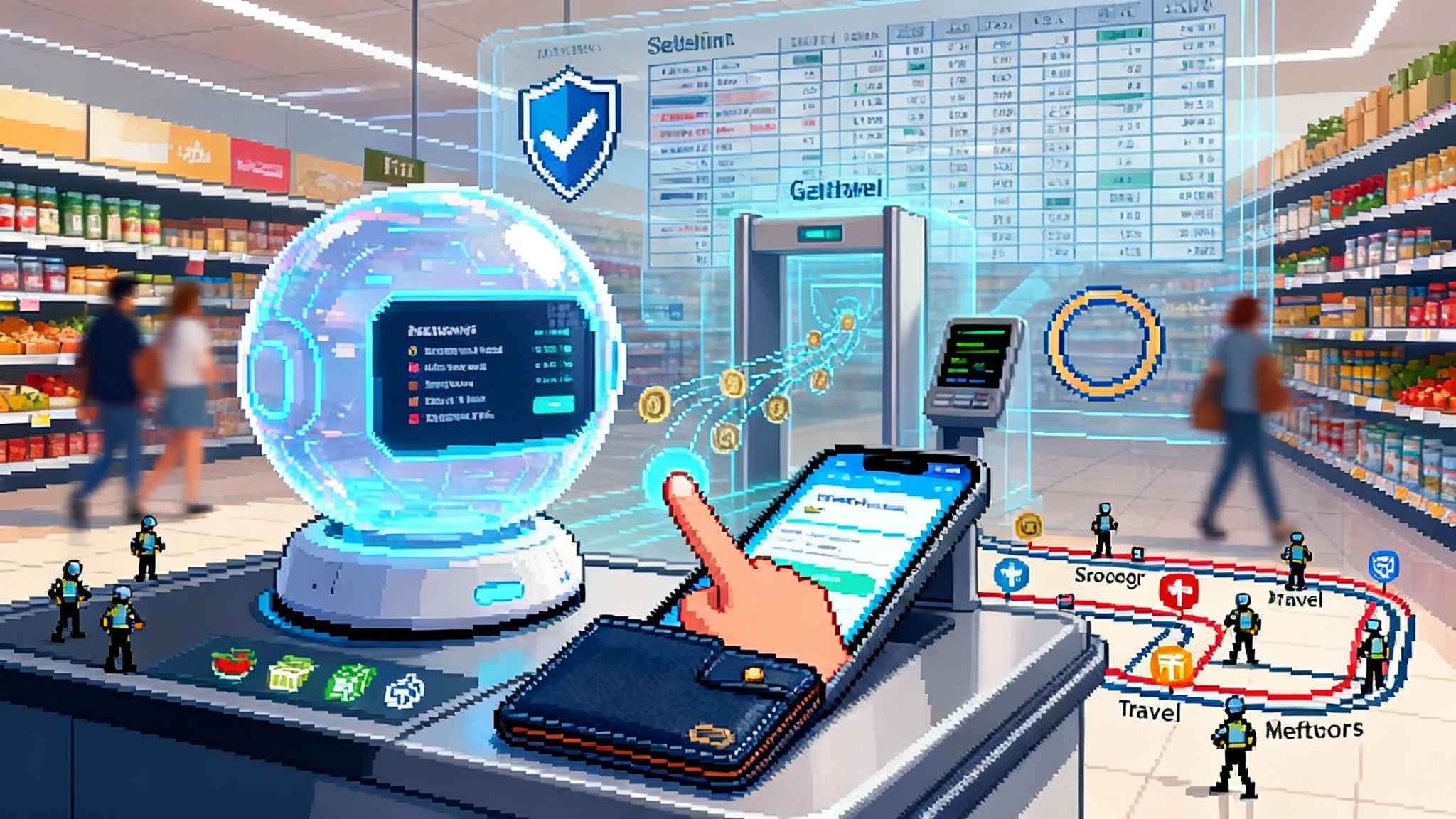The Linkless Web: How Search Becomes the Answer Economy
Google is moving search from navigation to synthesis. AI Mode and AI Overviews point to an answer first default that reshapes how value flows online. Here is what this fork means and how to prepare.

Breaking: search just split in two
In early 2025, Google introduced an AI-first experience inside Search called AI Mode. It is a place where you ask a complex question and receive a synthesized answer first, with links offered as supporting material rather than the main event. That move, together with the steady expansion of AI-generated summaries in results, signals a fork in the road. Navigation used to be the product. Now synthesis is.
The web is becoming two layers that depend on each other but play different roles:
- Human-authored supply chain: people and organizations create facts, analysis, images, code, and reporting.
- AI-native demand layer: users ask questions and receive bundled answers that draw from fragments across that human supply.
When the default interface turns into an answer rather than a list, value shifts toward materials that are licensed, attributable, and easily assembled into those answers.
Google made this shift visible in March with the debut of AI Mode as a Search experiment, framed as a place for complex, multi-step queries and follow-ups that keep you in a conversational flow rather than bouncing across tabs. The Google AI Mode announcement set the tone: more synthesis, richer context, and a clear intent to make the response the starting point. A few weeks later at I/O, Google broadened where AI summaries appear for everyday searches, making the behavior feel less like a lab demo and more like the new normal. By May, AI Overviews appeared in over 200 countries and more than 40 languages, a milestone that crystallized the change in default, as described in the AI Overviews rollout update.
Together, these two moves are the clearest sign yet that we are entering the answer economy.
From ten blue links to answer bundling
For two decades, search results were a conveyor belt of options. You chose a link, skimmed, hit back, tried another, and stitched your own answer. AI Mode and AI Overviews flip that. Now the stitching happens upstream, and you receive a composite response with citations. Navigation remains, but it is no longer the default. Answers are the product, and links are supporting evidence.
Think of it as the difference between a grocery aisle and a prepared meal counter. You can still buy ingredients, but more people will grab a boxed meal that combines high quality components, clearly labeled, from trusted suppliers. The challenge for the web is to make sure the labels are accurate and that the suppliers get paid. As agents begin to operate within apps and pages, interfaces are the new infrastructure and answers become the unit that interfaces coordinate around.
The web forks: a supply chain and a demand layer
The people and companies who make web content now operate inside a supply chain. They produce ingredients that can be reheated and portioned into a wide range of answers. The demand layer is the model-mediated interface that listens, plans, fetches, reasons, and assembles.
This fork changes three things at once:
-
Packaging. Content must exist as smaller, well described fragments that can be referenced and reused. A paragraph that defines a concept, a chart with embedded units and source, a step of a recipe with timing and substitutions, a code snippet with version metadata. The better your fragments are labeled, the more likely they are to be selected.
-
Attribution. Answers need provenance. If models cannot point to where a fact came from, trust erodes, quality declines, and publishers disengage. In the answer economy, attribution sits close to the surface, not buried at the end.
-
Payment. If fragments are used often, that usage needs a meter. The meter does not have to measure every token, but it must be good enough for the parties to settle fairly, similar to streaming royalties that rely on plays rather than seconds listened.
What gets priced in an answer economy
The raw unit is no longer a pageview. It is a cited fragment used inside an answer, bundled with others. That fragment might be:
- A named statistic with a date, method, and sample size
- A short, plain-language definition
- A geocoded fact, such as opening hours for a business
- A multistep recipe instruction with tested timings
- A code example pinned to a version and license
- An image with licensing and usage rights
To make fragments priceable, you wrap them with machine-readable context: canonical source, license terms, timestamp, jurisdiction, and a durable identifier. The practical goal is simple. When the model reaches for an ingredient, it can carry forward the who, what, and how of that ingredient into the final answer, and that attribution can flow into reporting and revenue share.
How provenance turns into payment
Provenance is the plumbing that connects recognition to compensation. It has three pieces:
-
Signing and marking. Media and text can carry cryptographic signatures and subtle watermarks that do not change meaning. Visual content can use provenance frameworks and invisible marks. Text can carry structured citations in markup and signatures in sitemaps or feeds. The purpose is not perfect enforcement. It is reliable recognition at scale.
-
Retrieval logs. When the demand layer fetches fragments, it writes a compact event that records the identifiers and the answer context. This is not a surveillance feed on users. It is an accounting signal that a licensed ingredient was used in a product delivered to a user.
-
Settlement. A clearing routine aggregates events by supplier and license, calculates usage over a period, and pays out. This can be direct from platform to publisher, or via a rights collective that represents smaller sites.
The outcome is a shift similar to music streaming. You do not invoice per song. You are paid by share of listening. Here, publishers are paid by share of answers that include their fragments, weighted by the value of the query and the prominence of the citation. This is where payments become AI policy, and why the mechanics of usage, reporting, and settlement must be designed with as much care as the models themselves.
Real world examples across categories
-
Recipes. A food site structures each step with temperatures, timing windows, ingredient substitutes, and allergen tags. In answers, the model cites the site for the protein-specific step and the sauce tip. Each cited use shows up in a monthly statement with recipe identifiers and query categories, such as dinner planning or pantry substitution.
-
Local news. A newsroom publishes quick briefs with clear timestamps, locations, and named entities. AI Mode pulls those verified details into a citywide answer during a storm. The publisher sees a surge of attributable uses for weather-related queries and receives a higher rate for time-sensitive, safety-related fragments.
-
Developer docs. A vendor documents an example that resolves a breaking change between versions 9.1 and 9.2. The answer layer cites the snippet inside how-to responses. The vendor gets usage-based payments and, more importantly, qualified traffic from developers clicking through for the full migration guide.
-
Health information. A medical nonprofit publishes reviewed definitions with citations and review dates. The demand layer prefers those for symptom queries and clearly labels them as reviewed content. Payments recognize the higher editorial standard, while links drive users to long-form guidance and care options.
Why this is happening now
AI Mode and AI Overviews moved synthesis to the front of the experience. That changes incentives. Crawl and index once defined the relationship between platforms and publishers. Retrieval, reasoning, and attribution now define it. The moment answers become the default, suppliers will ask to be compensated in a way that matches real usage inside those answers, not just the clicks that happen afterward. Deals between platforms and content owners are already normal in adjacent areas, and the rise of watermarking and content signing creates the conditions for broader adoption. The compliance footprint will matter, too, which is why compliance becomes the new moat when provenance and licensing move to the foreground.
New ranking, new playbook
If you run a site, the goal is to become the preferred ingredient for specific questions. That is not the same as chasing broad keywords. It means making your fragments better, clearer, and easier to cite.
Here is a focused playbook:
-
Atomize your content. Split long pages into addressable fragments. Give each fragment a stable identifier and a canonical source URL. Maintain a table that maps fragments to licenses. This is your internal source of truth.
-
Add rich structure. Use clear, unambiguous metadata. For definitions, include the term, a plain-language explanation, and a last reviewed date. For statistics, include the figure, confidence interval if applicable, method summary, sample size, and date. For code, include version, license, and runtime assumptions. For images, include creator, location, date, and license.
-
Publish a citation feed. Expose a lightweight feed that lists recent or revised fragments with identifiers, summaries, and canonical URLs. Think of this like a sitemap for answerable units, not just pages. The more predictable the format, the easier it is for the demand layer to attribute.
-
Sign and watermark where appropriate. Use cryptographic signatures for feeds and document bundles. Apply durable marks to images and video. The goal is recognition at ingestion and retrieval, not hard enforcement against copying.
-
Track answer usage, not only clicks. Request reporting that shows which fragments were cited, in what kinds of answers, and at what prominence. Use this to prioritize updates and to propose new licensing terms for high value areas.
-
Repackage for follow-up. In an answer-first world, many users will click only when they need depth. Make the landing page match the fragment that was cited. Lead with the detail the user expects and offer the deeper layers below.
-
Experiment with answer-native formats. If your category fits, publish small comparison matrices, short safety callouts, or timeboxed steps that can be slotted directly into answers with clear attribution. These travel well in synthesis.
What changes for marketers and product teams
-
Measurement. Traditional attribution models over-credit the last click. In AI Mode, the first meaningful touch may be a citation. Success looks like a high share of voice inside answers for your category and strong conversion on targeted follow-ups.
-
Brand. Your brand now shows up inside the explanation itself. That raises the bar on clarity. Write fragments that read well out of context and that carry your voice without marketing fluff.
-
Content operations. Editorial and engineering need a shared pipeline. Editors define the fragments and the rules. Engineers ensure identifiers, feeds, and signatures are correct and testable.
-
Ads and affiliations. Sponsored content and affiliate links must adapt to synthesis. Expect clearer labels inside answers and stricter rules about when and how offers appear. Plan for direct partnerships where your data can be licensed for inclusion in commercial answer modules.
Risks and how to mitigate them
-
Hallucinations. Models can still misstate facts. Clear source fragments reduce that risk, and visible citations allow for quicker corrections. Publish a correction feed that models can ingest.
-
Free riding. Some actors will try to reuse without attribution. Watermarking and signing do not eliminate this, but they make it detectable at scale and support both technical and contractual remedies.
-
Traffic cliffs. If your value is a thin rewrite of what others already say, synthesis will bypass you. The defense is to produce original data, field-tested instructions, verified comparisons, or local reporting that cannot be derived from elsewhere.
-
Overpersonalization. When answer layers tailor too aggressively, serendipity drops. Request controls that let users toggle breadth and source diversity, and make sure your fragments include context that helps systems balance relevance and variety.
The business model, in practice
Expect a few standard ways money moves:
-
Licensed corpora. Platforms pay to use large archives with clear terms. Usage dashboards show which parts drive answers, guiding renewals and price tiers.
-
On-demand fragments. A marketplace for high value fragments emerges. Think datasets, inspection checklists, or time-sensitive advisories that answer layers can access per use.
-
Performance pools. Platforms set aside a share of revenue, then allocate it to publishers by share of cited fragments, adjusted for query value and prominence. This mirrors streaming royalties but with more granular signals.
-
Direct integrations. For commercial tasks, answer layers work with booking, shopping, or ticketing providers. Here, revenue comes from conversions. Fragments still matter because they get you into the shortlist that the agent presents.
A concrete 30 day plan
-
Week 1. Inventory your top 200 evergreen pages and break them into fragments. Assign identifiers. Record license and canonical URL per fragment.
-
Week 2. Add structured metadata for definitions, stats, and steps. Publish a fragment feed. Sign the feed. Add image rights tags where needed.
-
Week 3. Create answer-native landing pages that match your top fragments. Add prominent contact or conversion actions that fit the intent.
-
Week 4. Ask your platform partners for citation reporting. Establish a basic usage threshold for payouts. Propose a small controlled trial in one high value category to validate the economics.
The strategic posture
In the answer economy, the winning move is to be indispensable in small, specific ways across many questions. That is less about volume and more about clarity, provenance, and distinctiveness. You are not optimizing for clicks. You are optimizing to be chosen during synthesis and to convert the subset of users who need the depth only you provide.
The web does not vanish in this model. It becomes a warehouse and a workshop that reliably produces the parts an answer needs. The new buyer is a model acting on behalf of a person. Make your parts fit the model’s hands, and make sure the label cannot fall off.
The turn
We built a web that assumed people would do the assembly. AI Mode and the worldwide spread of AI Overviews show that assembly is now a service. That service will only work if the ingredients are traceable and the cooks are paid. The sooner publishers and platforms agree on how to tag, count, and settle, the faster the answer economy matures into something fair and durable. The opportunity is right in front of us. Ship fragments that deserve to be cited, and insist that citations carry weight.








